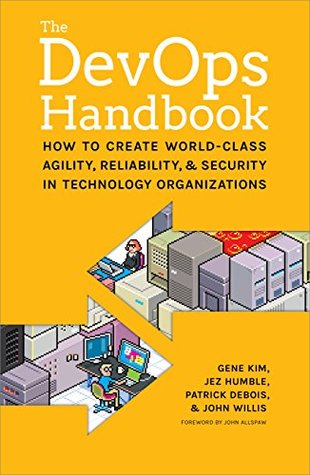More on this book
Community
Kindle Notes & Highlights
by
Gene Kim
Read between
February 24 - May 23, 2021
This
When later stages of the deployment pipeline fail, such as acceptance tests or performance tests, instead of stopping all new work, we will have developers and testers on-call who are responsible for fixing these problems immediately. They should also create new tests that run at an earlier stage in the deployment pipeline to catch any future regressions. For example, if we discover a defect in our acceptance tests, we should write a unit test to catch the problem. Similarly, if we discover a defect in exploratory testing, we should write a unit or acceptance test.
To increase the visibility of automated test failures, we should create highly visible indicators so that the entire team can see when our build or automated tests are failing. Many teams have created highly visible build lights that get mounted on a wall indicating the current build status, or other fun ways of telling the team the build is broken, including lava lamps, playing a voice sample or song, klaxons, traffic lights, and so forth.
By doing this, we set the stage for implementing continuous integration, which allows many small teams to independently and safely develop, test, and deploy code into production, delivering value to customers.
Gruver estimated that only 5% of their time was spent creating new features—the rest of the time was spent on non-productive work associated with their technical debt, such as managing multiple code branches and manual testing, as shown below: 20% on detailed planning (Their poor throughput and high lead times were misattributed to faulty estimation, and so, hoping to get a better answer, they were asked to estimate the work in greater detail.) 25% spent porting code, all maintained on separate code branches 10% spent integrating their code between developer branches 15% spent completing
...more
Lack of test automation made any level of testing during the two-week intervals inadequate to prevent large-scale failures. The version control branching strategy allowed developers to check in new code right up to the production release. The teams running microservices were also performing independent releases, which were often causing issues during the monolith release or vice versa.
Achieving outcomes like those at Facebook requires that we have an automated mechanism that deploys our code into production.
In
when developers get feedback on how their applications perform in production, which includes fixing it when it breaks, they become closer to the customer, this creates a buy-in that everyone in the value stream benefits from.
INSTITUTIONALIZE RITUALS TO PAY DOWN TECHNICAL DEBT In this section, we schedule rituals that help enforce the practice of reserving Dev and Ops time for improvement work, such as non-functional requirements, automation, etc. One of the easiest ways to do this is to schedule and conduct day- or week-long improvement blitzes, where everyone on a team (or in the entire organization) self-organizes to fix problems they care about—no feature work is allowed. It could be a problematic area of the code, environment, architecture, tooling, and so forth. These teams span the entire value stream, often
...more
This highlight has been truncated due to consecutive passage length restrictions.
ENABLE EVERYONE TO TEACH AND LEARN A dynamic culture of learning creates conditions so that everyone can not only learn, but also teach, whether through traditional didactic methods (e.g., people taking classes, attending training) or more experiential or open methods (e.g., conferences, workshops, mentoring). One way that we can foster this teaching and learning is to dedicate organizational time to it. Steve Farley, VP of Information Technology at Nationwide Insurance, said, “We have five thousand technology professionals, who we call ‘associates.’ Since 2011, we have been committed to
...more
This highlight has been truncated due to consecutive passage length restrictions.
Target is the sixth-largest retailer in the US, with $72 billion in revenue in 2014 and 1,799 retail stores and 347,000 employees worldwide. Heather Mickman, a director of Development, and Ross Clanton have held six internal DevOpsDays events since 2014 and have over 975 followers inside their internal technology community, modeled after the DevOpsDays held at ING in Amsterdam in 2013.‡ After Mickman and Clanton attended the DevOps Enterprise Summit in 2014, they held their own internal conference, inviting many of the speakers from outside firms so that they could re-create their experience
...more
CREATE INTERNAL CONSULTING AND COACHES TO SPREAD PRACTICES Creating an internal coaching and consulting organization is a method commonly used to spread expertise across an organization. This can come in many different forms. At Capital One, designated subject matter experts hold office hours where anyone can consult with them, ask questions, etc.
Some engineers chose to form grouplets, ad hoc teams of like-minded engineers who wanted to pool their 20% time, allowing them to do focused improvement blitzes. A testing grouplet was formed by Bharat Mediratta and Nick Lesiecki, with the mission of driving the adoption of automated testing across Google. Even though they had no budget or formal authority, as Mike Bland described, “There were no explicit constraints put upon us, either. And we took advantage of that.”


